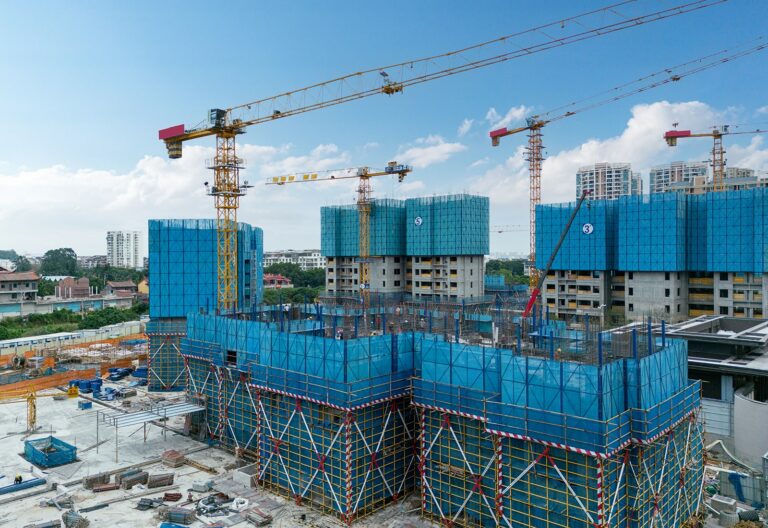If you’ve landed on this page, you’re probably already aware of the incredible opportunity available through the EB-5 Visa program from the USCIS (United States Citizenship and Immigration Services). As you’ve waded through the USCIS website and other resources to learn as much as possible about the program, you’ve probably wondered how long all of this is going to take. What is the EB-5 visa timeline like? What kind of EB-5 visa processing time is expected for each of the immigration forms?
The short answer is, unfortunately, it varies. But we won’t let you drift in the wind. In this article we’ll give you the breakdown on how much time – in general – each part of the process takes, including processing times for the forms. Then we’ll provide some insights and tips on how to streamline this process to make it as fast, smooth and painless as possible. Afterall, your American dream is on the line here, and the United States looks forward to welcoming you to your new home in the land of opportunity.
Expedite your EB-5 visa journey with regional center expertise from APG. Contact us today to get started.
As you’re probably aware, the EB-5 visa program is a pathway for foreign investors to obtain U.S. residency through investments in commercial enterprises. These ventures require a substantial cash investment, need to create jobs for American workers, and check a number of other boxes in order to qualify the investor for a permanent residency green card. This program was established by Congress in 1990 and has been used by throngs of immigrant investors to achieve their dual goals of permanent resident in the United States and jumpstart a lucrative business and investing career here in the States.
Before we jump into the timeline specifics, let’s do a quick refresher on the most important parts of the EB-5 visa program. The program requires a financial commitment to the tune of $1.05 million (or $800,000 if your project qualifies for the Targeted Employment Area (TEA) program) and the creation or preservation of at least ten full-time jobs for U.S. workers. Despite these intensive requirements, the benefits of the EB-5 visa, including access to education, healthcare, and the freedom to live and work anywhere in the U.S., make it an attractive option for many. And indeed, U.S. immigration services processes thousands of EB-5 visas per year.
But you’re not just a number. Your EB-5 visa process is one of the most important projects you’ll undertake in your lifetime, and it will change the future of your children and grandchildren. That means that understanding all the details of the EB-5 program – including planning for how long each phase will take – is mission critical for investors aiming to maximize their chances of success. This comprehensive guide will break down each stage of the EB-5 timeline, from nailing down your investment choice and the initial application to achieving permanent residency. We’ll highlight the key milestones, typical processing times, and provide strategic insights along the way to help you as an investor navigate this complex journey with confidence. So let’s get right into it.
First Things First: Preparing for Your EB-5 Journey
We know you’re ready to download your initial form from USCIS and decide which of the fifty states you’d like to live in. But before we get ahead of ourselves, let’s make sure we understand the major highlights of the EB-5 visa program. In this section we’ll do that, but we’ll also cover the essential decisions you have to make first: whether you are going solo as a direct investor or if you’re joining a team with a regional center. We’ll also briefly discuss several different sectors for your investment project to give you some ideas for further research.
Understanding the Basics: EB-5 Program Requirements
Before diving into the specifics of your investment, let’s cover the biggest requirements and objectives of the EB-5 visa program. Every decision you make and action you take toward your EB-5 visa should have satisfying these requirements at its core.
Money, Money, Money: Your EB-5 Financial Requirements
Before you can even entertain the immigration option of the EB-5 visa program, you need to be clear on the amount of money involved. The minimum EB5 visa investment amount is currently $1.05 million, but you can save a few hundred thousand dollars by taking advantage of the reduced minimum of $800,000 if the investment is made in a Targeted Employment Area (TEA). We’ll touch more on TEAs later, but for now just understand that these are projects in rural areas and regions with high unemployment. Your investment must be in a new commercial enterprise, which can take various forms from real estate developments to business startups. We’ll dig a little deeper into your options on industries below.
Generation of Jobs: The Employment Requirement
The EB-5 visa program isn’t just about buying a green card. The heart of the program is growth of the American economy, including providing jobs for American workers. This is why each EB-5 visa investment must create or preserve at least ten full-time jobs for U.S. workers. These jobs must be sustained for a minimum of two years and can include direct, indirect, or induced employment, depending on whether the investment is direct or through an EB5 regional center like APG. We’ll clear that up in more detail in the next section.
At-Risk Requirement
To qualify for the EB-5 visa, your investment must be considered “at risk” throughout the immigration program. What does this mean? Essentially, this means that the capital you invest cannot be guaranteed to be returned to you. Your investment must be subject to both the potential for loss and gain, just like any other standard business investment. This requirement ensures that the funds genuinely contribute to economic activity and job creation. So while your investment funds can be procured through loans, such as EB-5 financing for real estate, that loan cannot be secured by the EB-5 visa project itself.
Two Paths to EB-5 Success: Direct Investment or Regional Center
One of the first and biggest decisions you’ll make as you get started on the EB-5 visa process is whether to pursue a direct investment or invest through a regional center. The right choice for you depends on your preferences, expertise, and desired level of business involvement. Let’s break it down.
Direct Investment: Total Control, Ultimate Responsibility
If you’ve got a strong business background, have a solid team in place, and have experience in the business landscape in the area and industry of the U.S. you’re most interested in, direct investment could be right for you. A direct investor has complete control over the investment project. You manage the day-to-day operations, make strategic decisions, and directly oversee the creation of jobs. (Please note that direct investment also requires direct job creation. This means that indirect jobs such as those created through construction or otherwise incidental to the business creation cannot be counted like they can for regional center investments.)
However, with this control comes significant responsibility that only the most advanced immigrant investors may be ready for. You are solely accountable for meeting and proving satisfaction of the EB-5 requirements, including job creation, and sustaining the business in an often up-and-down economy. This path can be more demanding and time-consuming, requiring a deep understanding of the U.S. business and regulatory environment.
Regional Center: Hands-Off, Strategic Partnership
On the other hand, investing through a regional center offers a more hands-off approach that has become very popular with immigrant investors. Regional centers are organizations that have gone through an approval process with U.S. immigration services and are responsible for specifically managing EB-5 projects and ensuring they meet the program’s requirements. By investing through a regional center, you can leverage their expertise, resources, and established projects, which often include pooled investments from multiple EB-5 investors. This is a breath of fresh air for investors who don’t want or have the experience to run the entire show themselves.
Regional centers are really ideal if you prefer a more passive investment strategy, as the regional center handles the operational aspects and job creation metrics. The center also assists with providing the documentation on the project and requirement satisfaction required by USCIS. It reduces your direct involvement but still allows you to reap all the benefits of the EB-5 visa program. However, it’s crucial to choose a regional center with a strong track record like APG. Be sure to check out our projects so you can see how our investment offerings line up with your goals.
Success is in the Details: Choosing Your EB-5 Visa Project
As an investor, what sector will your project be in? Choosing the right project for your EB-5 visa investment is a critical step that can significantly impact your success, and it will largely depend on whether you do a direct investment or if you partner with a regional center. Different industries offer varying levels of risk and reward, so be sure that your investment choice is made with your financial goals and risk tolerance clearly in mind. Here are some of the top industries for EB-5 investment.
Real Estate
When you think of a solid investment, it’s hard to beat real estate. Projects rooted in real estate are a popular choice among EB-5 investors due to their tangible nature and strong potential for capital appreciation. Think residential developments, commercial properties, and similar essential ventures. Real estate investments typically offer stable returns and meet the job creation requirements through construction and ongoing property management roles. Many regional centers focus heavily on real estate projects throughout the United States.
Hospitality
Similar to real estate (and almost always including real estate) is the hospitality sector. Primarily consisting of hotels and resorts, these EB5 investment opportunities often have high job creation potential. They require a large workforce for construction, operations, and services. Additionally, the hospitality industry can be lucrative, especially in high-demand tourist areas, so if you’re looking for an attractive EB5 investment return hospitality might be your best bet. Fortunately, strategic regional centers like Atlanta Partners Group specialize in these types of valuable projects for EB-5 visa investors. Contact us to learn more about our current offerings.
Healthcare
The healthcare sector offers significant growth potential – and is a much-needed service in the United States. The demand is strong, but hospitals, rest homes, and rehab facilities also come with higher risks. Investments in healthcare facilities or services can easily meet the EB-5 visa requirements while contributing to public health. However, the regulatory environment, high up-front and ongoing expenses, and ensuring the project’s success can be challenging.
Manufacturing
If you love creating tangible products, manufacturing projects can have a strong appeal. They also have a substantial job creation potential. These investments can include setting up factories or production facilities. While manufacturing can drive significant economic activity, it also involves higher operational risks and requires extensive industry knowledge. EB-5 Investors from overseas should also be aware of the much more stringent health and safety requirements that apply to facilities in the United States.
Tech Start-ups
Tech start-ups are exciting, dynamic, and innovative. They offer a chance to change the world and the potential for high returns. But as any wise investor knows, they also carry considerable risks due to the fast-paced and often unpredictable nature of the technology sector. Many promising tech start-ups have ended in failure. But if you have a passion for innovation and are willing to take on higher risks, tech start-ups can be a thrilling investment choice for the committed EB5 visa direct investor.
Now that we’ve covered the basics and gotten you thinking about the method and type of project you’re interested in, let’s jump into the whole reason you’re here – the EB5 visa timeline. The essential question is, how long is this whole thing going to take? Let’s go step by step and get you as close as possible to an accurate answer.
Let’s move you toward a green card faster. Contact Atlanta Partners Group today for a personal consultation.

The EB-5 Visa Application Process and Estimated Timeline
Now that we’ve run through your initial considerations and covered the critical points of the EB-5 program and your personal investment decisions, it’s time for the main event. How long will it take to get your green card? According to the USCIS, processing estimates range from about 30 months to over five years.
What? Five years! Wait, don’t worry, and certainly don’t abandon your hopes and dreams for permanent residency. You should be aware that most applications can result in a green card closer to two to three years rather than five years. And with the tips and tricks we’ll share with you later, you can shorten the timeline considerably. For now, let’s look at each step and approximate how long you should expect to spend on pre-application, the USCIS Form I-526, the Form DS-260 or I-485, and the Form I-829. We’ll cover each step and form and in general what you should expect for each one. Each immigration case is different and other forms may be required or recommended by your attorney or other member of your EB-5 advisory team.
Pre-Application: What Needs to Happen First?
Before you even think about submitting your initial Form I-526 or I-526E, there are several crucial steps to complete. These pre-application preparations are vital to ensuring a smooth and successful EB-5 application process. You can expect the pre-application process to take a few months, or longer if you’re doing a direct investment.
Choose Your Investment Path
As we’ve already discussed, the first decision you need to make is whether to pursue a direct investment or go through a regional center. This choice will significantly impact your application process, as direct investments require more personal involvement, paperwork, and management, while regional centers handle much of the operational and compliance work on your behalf. There is also different paperwork and forms required for each path.
Select a Viable Project
If you’re doing a direct investment, you probably already have a business idea in mind. You’ll need to dig deep to determine if your idea will both meet the EB-5 visa program requirements and survive as a business. This involves extensive research and due diligence. If you’re partnering with a regional center, the selection process is much more simple. They will have a few open projects that you can choose from which may be in varying stages of development. Your primary focus will instead be choosing the right regional center, which we’ll cover in greater depth later, instead of choosing between projects.
Secure Your EB-5 Funds
Obviously, one of the most critical pre-application steps is securing the necessary funds for your investment. No money = no EB-5 visa. You need to have the minimum investment amount ready—$1.05 million or $800,000 if the project is in a TEA. These funds must be at risk, as we reviewed earlier, and you’ll need to prove that they have been legally sourced. This will include gathering extensive financial documentation to prove the legality and source of your funds, so be sure you’ve got a solid paper trail. Failure to prove legally obtained funds can easily result in a denial of your initial petition.
Consult with EB-5 Experts
No matter how business savvy you are, you’re only going to be as good as your team. Engaging with immigration attorneys, financial advisors, CPAs and tax specialists, and EB-5 visa consultants that you’ve thoroughly vetted is highly recommended. These professionals can provide invaluable guidance and ensure that your EB-5 application complies with all regulatory requirements. They can also assist in preparing the necessary documentation and navigating any potential legal or procedural hurdles, helping you avoid costly delays or even application denials.
Prepare Your Documentation
During the whole EB-5 visa program journey, you’ll want to stay organized (or hire someone who is). Collecting and organizing all required documents before starting your application is essential to keeping on track. This includes financial records, proof of fund sources, business plans, job creation projections, and personal identification documents. Having all these documents in order will streamline the application process and reduce the risk of delays, especially if you’re a direct investor. Regional center investors will enjoy a reduction in the level of paperwork required for their EB-5 petitions.
Starting the Timeline: The Form I-526
Filing Form I-526, Immigrant Petition by Alien Investor, is the first official step in the EB-5 visa application process. Congratulations on formally getting the EB-5 immigration process started! This form is your petition to the USCIS that demonstrates your eligibility for the program and details your investment and its expected economic impact. It also starts the clock on your EB-5 visa paperwork process.
What is the I-526 or I-526E?
Form I-526 is the initial application that EB-5 visa investors submit to USCIS to begin their visa process. This petition provides the USCIS with detailed information about you as the investor, your investment project, and how the investment will meet the job creation requirements. The I-526E is a newer form specifically for regional center EB-5 investors. The I-526E was introduced to streamline the process for those participating through these centers.
While both petition forms serve the same general purpose, there are a few key differences. The Form I-526 must be used by direct investors. It requires detailed information about the business you are directly investing in, including your role in managing or overseeing the business. Be prepared to be specific, detailed, and provide a lot of information from your due diligence process. The goal is prove that the business will satisfy the EB-5 visa requirements.
The Form I-526E should be used by regional center EB5 visa investors. It focuses on the regional center’s project details and reduces the burden on individual investors by leveraging the regional center’s compliance and job creation records. When you partner with APG, we assist with all the information you need on the EB-5 project itself for preparing the petition.
When Should the I-526 or I-526E be Filed?
You should file your I-526 or I-526E as soon as you have secured your investment and gathered all the necessary documentation. Timing is crucial because the processing time can be lengthy, and any delays in filing could impact your overall immigration timeline. So you don’t want to rush, but you also don’t want to drag your feet. Prompt submission is your best bet.
What Documentation is Needed for the I-526 or I-526E?
Both forms require comprehensive documentation, including proof that the investment capital is lawfully sourced, a business plan outlining how the investment will create the required jobs, and evidence of the investment being placed at risk. Both types of EB-5 investors will need the personal financial information and the related paper trail, but direct investors will be on their own to compile detailed information about the commercial enterprise. This will include organizational documents, financial projections, and job creation timelines. A regional center investor will get that information from their regional center partner. Also, don’t forget to include your filing fees!
How Long Does Preparation Take for the I-526 or I-526E?
Obviously, the time required to prepare and file the I-526 or I-526E varies based on the complexity of your project and the availability of required documentation. On average, it can take several months to gather all necessary documents, consult with advisors, and complete the forms accurately. Regional center investors can expect this process to be much shorter.
Should the Form I-485 be Filed with the I-526 or I-526E?
If you are already in the U.S. on another visa, we have good news. You might be able to file Form I-485, Application to Register Permanent Residence or Adjust Status, alongside your I-526 or I-526E. This concurrent filing can potentially shorten your overall processing time by allowing USCIS to process both applications simultaneously. Check with your EB-5 advisors to see if you can take advantage of this opportunity to streamline your EB5 visa immigration program journey.
What’s the Approval Timeframe from USCIS?
Once your I-526 or I-526E is submitted, the approval timeframe can vary significantly. It can take between 18 to 24 months for immigration services to process and approve the petition. Processing times will fluctuate based on the volume of applications, complexity of your petition, and any changes in immigration policy. It may be a lengthy wait, but you’ll get to watch your EB-5 investment unfold into a fruitful business while you wait.
APG’s EB-5 visa approved TEA projects can help you get your green card faster. Contact us today to learn more.
Getting Registered: The DS-260 or I-485
If you haven’t already been able to do so alongside your I-526 forms, next up is registering for your green card, which involves filing either Form DS-260 or Form I-485, depending on your current location. Here’s what you need to know about these forms.
What are the DS-260 and I-485 and What They Do?
Here are the basic differences between these two forms, and who should use each to apply for admission to the United States or for conditional permanent residency.
DS-260: Immigrant Visa Application
Form DS-260, the Immigrant Visa Application, is for those who are currently outside the United States. This form is part of the consular processing procedure, which means you’ll be working with a U.S. consulate or embassy in your home country. The DS-260 provides detailed information about your background, including your personal details, family information, and immigration history. Once this form is approved, you’ll be scheduled for an interview at the consulate. This is where you’ll present your documentation and answer questions about your EB-5 investment and plans for life in the United States.
I-485: Application to Register Permanent Residence or Adjust Status
Form I-485, the Application to Register Permanent Residence or Adjust Status, is for those who are already in the United States on a different type of visa. This form allows you to adjust your status to that of a conditional permanent resident without leaving the U.S. The form is similar to the DS-260, requesting information about your personal details, background, and evidence of your eligibility. Filing this form also involves an interview with USCIS, where you will need to present your documentation and answer questions about your investment and compliance with the EB-5 immigration requirements. But this will be done in the United States rather than at the U.S. consulate in your home country.
When Should the DS-260 or I-485 Be Filed?
If you’re submitting the DS-260, you should file the DS-260 after your I-526 or I-526E petition has been approved and you’ve received notification from the National Visa Center (NVC). The NVC will provide instructions on how to submit your DS-260 online. Be sure to complete submission timely and ensure your interview is scheduled promptly. Otherwise you can face unnecessary and lengthy delays, which no one wants!
If you are already legally in the U.S., hopefully you have already filed the Form I-485 concurrently with your I-526 or I-526E if your priority date is current. If not, you must wait until your I-526 or I-526E is approved to move forward with the I-485. Filing concurrently is a better bet as it can significantly shorten your wait time for both conditional and permanent resident status with a green card.
What Documentation is Required to Be Filed with the DS-260 and I-485
The DS-260 will need the confirmation page of the DS-260 application and a copy of your passport, and of course, the filing fee. Make sure your passport is valid for at least six months beyond the date you plan to enter the U.S. You’ll also need birth certificates for you and any of your dependents that you plan to bring into the States with you. If you’re married, also include your marriage certificate. Police clearance certificates from all countries where you have lived for more than six months since age 16 should also be included, as well as medical examination results from an authorized physician. Include a copy of your Form I-797 (approval notice of I-526 or I-526E) and two passport-sized photographs. Finally, be ready to submit evidence of financial support, such as affidavits of support, bank statements, tax returns, and so on. Your legal team can advise you on the specifics for your case.
For the Form I-485, in addition to your completed Form I-485 and filing fee, you’ll want to be prepared to include much of the same information as for the DS-260. You can find a checklist from the USCIS here. Generally, this includes a passport copy (valid for at least six months beyond the intended date of adjustment), birth certificates for you and your incoming family, marriage certificate (if applicable), two passport-sized photographs, your Form I-797 (approval notice of I-526 or I-526E) if not being submitted concurrently, Form I-693 (report of medical examination and vaccination record), evidence of lawful entry into the U.S. (e.g., Form I-94, visa stamp) from your initial entry into the country, police clearance certificates, evidence of financial support, filing fees and biometrics fee.
Regardless of which of the forms you’re submitting to immigration, be sure to follow the instructions closely and work with your EB5 professional team to ensure accuracy and thorough completion. It may seem like a lot, but once you get moving it will all come together. And, it will definitely be worth it as you move closer and closer to your green card!
What It Means When You Get Approval
When your DS-260 is approved, you will receive an appointment for an immigrant visa interview at the U.S. consulate or embassy. During this interview, a consular officer will review your application, supporting documents, and ask questions to verify your eligibility. If all goes well, you will be issued an immigrant visa, allowing you to enter the U.S. with a status of being a permanent resident with conditions. Upon entry, you will receive your green card by mail within a few weeks. You can live in the United States until your EB5 visa requirements are met, then you’ll need to move on to the next step of removing the conditions of your residency.
Approval of your I-485 means you have successfully adjusted your status to that of a permanent resident, with conditions. You will receive your green card in the mail, typically within a few weeks of approval. This status allows you to live and work in the U.S. indefinitely while you fulfill the conditions of your EB5 visa. Then you’ll move on to the next steps toward your permanent residency green card.
How Long Does Approval Take?
The approval timeline for both forms can vary based on several factors, including the volume of applications and any additional checks required by USCIS or the consulate.
The DS-260 generally takes a few weeks to a few months from the submission of your forms and documents to the scheduling of your consular interview. After the interview, your immigrant visa is typically issued within a few days to a week, assuming you are approved. You should receive your green card within a few weeks after entering the U.S. Congratulations on achieving this milestone step!
Processing times for the I-485 can range from 8 to 14 months, of course, depending on the service center handling your case and other factors. These include such potential complications as the completeness of your application, your background check, and the scheduling of your biometrics appointment and interview. Any of these things can affect your individual timeline. Once approved, though, you should receive your green card within a few weeks. Since you’re already in the United States if you’re using this form, you can continue to work and live as normal while you wait for your change in status to be approved.
Hitting the Target: The Form I-829
When you reach this point, you’ve been through a lot. You’ve been running your business in the U.S. (or keeping track of the success of your EB5 visa project through a regional center). You’ve filled out a lot of paperwork and invested a lot of time and money into your future and the future of your family. Now you’ve come to the final step in your EB-5 journey: the removal of conditions on your green card. This is done by filing Form I-829, Petition by Investor to Remove Conditions on Permanent Resident Status. This step is a big deal as it transitions your status from a conditional permanent resident to a permanent resident without conditions.
What Does the Form I-829 Do?
Form I-829 is submitted to demonstrate that you have met all the requirements of the EB-5 program, including the investment and job creation criteria. Approval of this form removes the two-year conditions on your green card, granting you full permanent residency. It’s also a big reason to celebrate, because the U.S. is now officially your home thanks to the EB-5 visa!
When Does the I-829 Need to Be Filed?
Timing is super important for this filing. The I-829 must be filed within the 90-day period immediately before the second anniversary of your admission to the U.S. as a conditional permanent resident. Timely filing is critical to avoid losing your conditional resident status. So make sure you and your team are aware of all the pertinent dates and stay on track.
What Documentation is Required to Be Filed?
In general, along with the completed Form I-829, you’ll need to provide a lot of supporting documentation relating to your EB-5 investment. This will include paperwork to prove the commercial enterprise’s continued operation (e.g., tax returns, business licenses), evidence of the investment (e.g., financial statements, bank statements), and proof that the investment was sustained throughout your conditional residency period. If you’re a direct investor, you’ll have to provide documentation showing the creation or preservation of at least ten full-time jobs (e.g., payroll records, W-2s). If you’ve invested through a regional center, they will be providing much of the required documentation for you, so it eases the burden on you and your team. You’ll also need to include personal identification documents like your passport and green card, as well as the filing fees and biometrics fee.
What It Means to Get Approved
Approval of Form I-829 means it’s time to celebrate, because you have successfully fulfilled all the EB-5 program requirements. The conditions on your green card are removed, granting you full permanent resident status. From this point forward, your status is not limited by any conditions related to your EB-5 investment or job creation. You are free to pursue other investments and interests as you please.
How Long Does Approval Take?
The Form I-829 is heavy on the paperwork and labor intensive to review and verify, then approve. So processing time can vary, generally ranging from 22 to 45 months for more complicated cases. Factors influencing this timeline include the completeness of your application, the complexity of your case, and the workload of the service center handling your petition. Once approved, you will receive a new green card that is valid for ten years, and you will no longer be subject to the conditions of the EB-5 visa requirements. Congratulations are in order for you and your family!
Your EB-5 visa journey is our priority. Learn how we can help you make your green card goals a reality faster. Contact Atlanta Partners Group today.
Strategic Speed: How to Expedite the EB-5 Process
The entire EB-5 visa process is lengthy to the tune of years of time and money invested. So naturally you’re probably wondering if there’s anything you can do to speed up the timeline and get your green card faster. While USCIS unfortunately does not currently offer premium processing for EB-5 petitions, even for an additional fee, we have good news. There are some routes to your green card that are faster than others! Here we’ll cover the main tactics do just that so you can start settling in to the U.S. as an immigrant investor at top speed.
Error-Free Forms
One of the simplest and most obvious ways to expedite your EB-5 visa is ensuring your forms are completed accurately and submitted correctly. Mistakes or missing information can lead to delays, requests for additional evidence (RFEs), or even (yikes!) denials. Here are some tips for keeping your forms error-free:
Double-Check All Entries: Before submitting, meticulously review all information for accuracy. Have multiple members of your team review it as well.
Complete All Sections: Ensure every section of the form is filled out. If something doesn’t apply, mark it as “N/A.”
Include Correct Fees: Verify that you’ve included the correct filing fees, as incorrect payments can delay processing. Double check your fee requirement and acceptable payment methods here.
Attach All Required Documents: Submit all necessary documentation to support your form or petition, including financial records and identification documents.
As we’ve already mentioned, using an experienced immigration attorney can be invaluable. They can help ensure your forms are filled out correctly and all required documents are included. This is not where you want to cut costs.
Invest with a Regional Center Instead of as a Direct Investor
Even if your heart is set on being an independent business owner, here’s why you may want to invest through a regional center rather than pursuing a direct investment. (Remember, you can always do your own thing after you’ve got the conditions removed from your green card!) Regional center investors can enjoy significantly streamlined EB-5 processing. Here’s why:
Streamlined Processing
Regional centers are USCIS-approved organizations that manage projects specifically for EB-5 visa investors. They handle much of the paperwork and compliance, making the process smoother for investors, and for the immigration employee reviewing the paperwork. With a regional center, you leverage their expertise and experience, reducing your burden significantly.
Less Complex
The regional center model simplifies many aspects of the EB-5 visa program requirements, such as job creation requirements. While direct investments must create direct jobs – employees directly working and being paid by the business – regional centers can count indirect and induced jobs, making it easier to meet the ten-job requirement.
USCIS Efficiency
USCIS is well-acquainted with regional center projects, often resulting in faster processing times. These centers have established relationships and processes in place, which can help expedite your application. The immigration employee reviewing your case may see the same or similar documentation coming from other investors working with the same regional center.
Less Complicated for You and Your Team
With a regional center as your partner, your paperwork tends to be less complicated and time-consuming compared to coming up with all of the investment information from scratch as in a direct investment. This tends to makes form completion with document compilation less involved and ultimately faster leading up to submission of the petition.
Selecting a Regional Center Project in a TEA Area
The USCIS set-aside program means that choosing a project in a Targeted Employment Area (TEA) can significantly expedite your EB-5 visa timeline. These set-aside visas are designed to promote investment in these struggling areas by offering incentives to EB5 visa investors.
What is the Set-Aside Program?
The EB-5 Reform and Integrity Act introduced set-asides for EB5 investments in specific areas to promote economic growth. These TEA areas include high unemployment zones, infrastructure projects, and rural developments. By investing in these designated areas, you can benefit from expedited EB5 program processing in addition to the reduced capital investment minimum. This is a win-win situation for everyone involved.
Expedited Processing
Projects in TEA areas receive priority processing, meaning your paperwork moves faster through the USCIS system. This can significantly cut down your waiting time, potentially reducing years off your immigration timeline.
Breakdown of Set-Aside Visas
The EB-5 visa program allocates a percentage of visas specifically for TEA investments for a total of 32% of visas issued for the year. Here’s the breakdown:
20% for rural areas
10% for high unemployment areas
2% for infrastructure projects
By selecting a project that falls into one of these categories, you can take advantage of these set-asides and essentially jump ahead in the immigration line. Especially for investors coming from high immigration countries, such as India and China, the set-aside program really is a golden opportunity to spend less time waiting. For all of these reasons, Atlanta Partners Group specializes in TEA projects for our EB-5 investor community, especially rural areas which have the highest percentage of set-aside visas.
Choosing an Expedited EB-5 Investment Project
Another way to speed up your EB-5 process is by selecting an expedited investment project. These projects are given priority by USCIS for various reasons, such as national interest or urgent economic need.
Definition and Benefits
Expedited projects are those that USCIS has determined to be of significant public benefit. These might include projects that provide critical infrastructure improvements, create a large number of jobs in economically distressed areas, or otherwise have a substantial economic impact. In other words, the U.S. government is in a hurry to make changes using these projects. That means that investing in an expedited project can lead to faster processing times and quicker approval of your EB-5 petition.
Drawbacks and Challenges
While expedited projects can offer faster processing, they may also come with some fairly significant challenges. Most notably, expedited EB5 investment projects are hard to come by. This limited availability means it may be hard to find one that meets your investment criteria, and if it does, there’s going to be more competition from other investors to get in on the project. Also, these projects tend to be higher risk. They might be in less stable or more speculative industries, increasing the risk of your investment capital. Remember that project failure means EB-5 visa approval failure, so manage your risk accordingly.
Additional Strategies to Expedite Your EB-5 Process
Beyond the main strategies discussed, here are some additional tips and tricks to help speed up your EB-5 visa approval and get that green card faster.
Concurrent Filing of I-485
As mentioned earlier, if you are already in the U.S. on another visa, consider concurrent filing of Form I-485, Application to Register Permanent Residence or Adjust Status, along with your I-526 petition. This can reduce overall processing time by allowing USCIS to handle both applications simultaneously. It can also reduce your professional fees charged by your legal and advisory team.
Regular Communication with USCIS
Just like with any relationship, communication is key! Maintaining regular communication with USCIS can help ensure your application stays on track. Respond promptly to any requests for additional evidence (RFEs) and check the status of your applications regularly. This will help ensure that any delays are not due to your lack of quick response.
Hire Experienced Professionals
Remember when we said you are only as good as your team? Well, working with experienced immigration attorneys and EB-5 consultants can greatly expedite your process. These professionals are familiar with the details and potential gotchas of the EB-5 visa program and can help you navigate potential pitfalls, ensuring your application is processed as quickly as possible. Inexperienced team members may make errors that end up causing delays in your EB5 visa timeline.
Stay Informed About Policy Changes
Immigration policies can change, as can processing fee schedules, so staying informed about any new regulations or procedures can help you take advantage of opportunities to speed up your process. Subscribe to updates from USCIS and other reputable sources to stay ahead of any changes, and keep in touch regularly with your professional team.
Early Preparation
The early bird gets the worm, and the for the early EB-5 preparer, that’s a green card. Start preparing your documentation and investment plan as early as possible. The earlier you start, the more time you have to ensure everything is in order, reducing the risk of last-minute issues that could delay your petitions or applications.
By following these strategies, you can significantly reduce the time it takes to navigate the EB-5 process and achieve your goal of U.S. permanent residency. While the EB-5 process is inherently lengthy, careful planning, and strategic decisions can help you expedite your path to a green card. It’s okay to be excited – America is excited to welcome you home, too!
Streamlining Your EB-5 Visa Timeline with APG
Many investors are discouraged from attempting the EB-5 visa program because of the lengthy and complicated process. However, recent changes – most notably the regional center program – have made it easier than ever to take advantage of this golden opportunity to make America your home. So for most investors the question is not so much choosing between direct investment or regional center, but which EB-5 regional center to partner with. In this section we’ll discuss why Atlanta Partners Group is the best choice you can make when choosing a regional center. We believe our experience, track record, and commitment to investor success speaks volumes about what you can expect to achieve with APG.
APG is entirely committed to the success of our investors. We recently introduced a unique Project Completion and Denial Refund Guaranty, ensuring that we make good on our promises to our EB5 visa investors. If your I-526E petition is denied due to project-related failures, you can receive a refund of your invested capital. This assurance provides peace of mind and confidence in your investment that are simply difficult to find with other organizations. Our specialization in Targeted Employment Areas (TEA) allows you to invest at a lower threshold of $800,000, qualifying you for priority processing and benefiting from the 20% visa set-aside program.
With a proven track record of successful projects and higher-than-average returns, Atlanta Partners Group is a solid, experienced, and reliable EB-5 visa partner. We offer comprehensive support throughout the EB-5 visa process, going the extra mile to make sure your journey to U.S. residency is smooth and efficient as possible. Contact Atlanta Partners Group today to start your EB-5 visa adventure and secure your future in the United States.


















